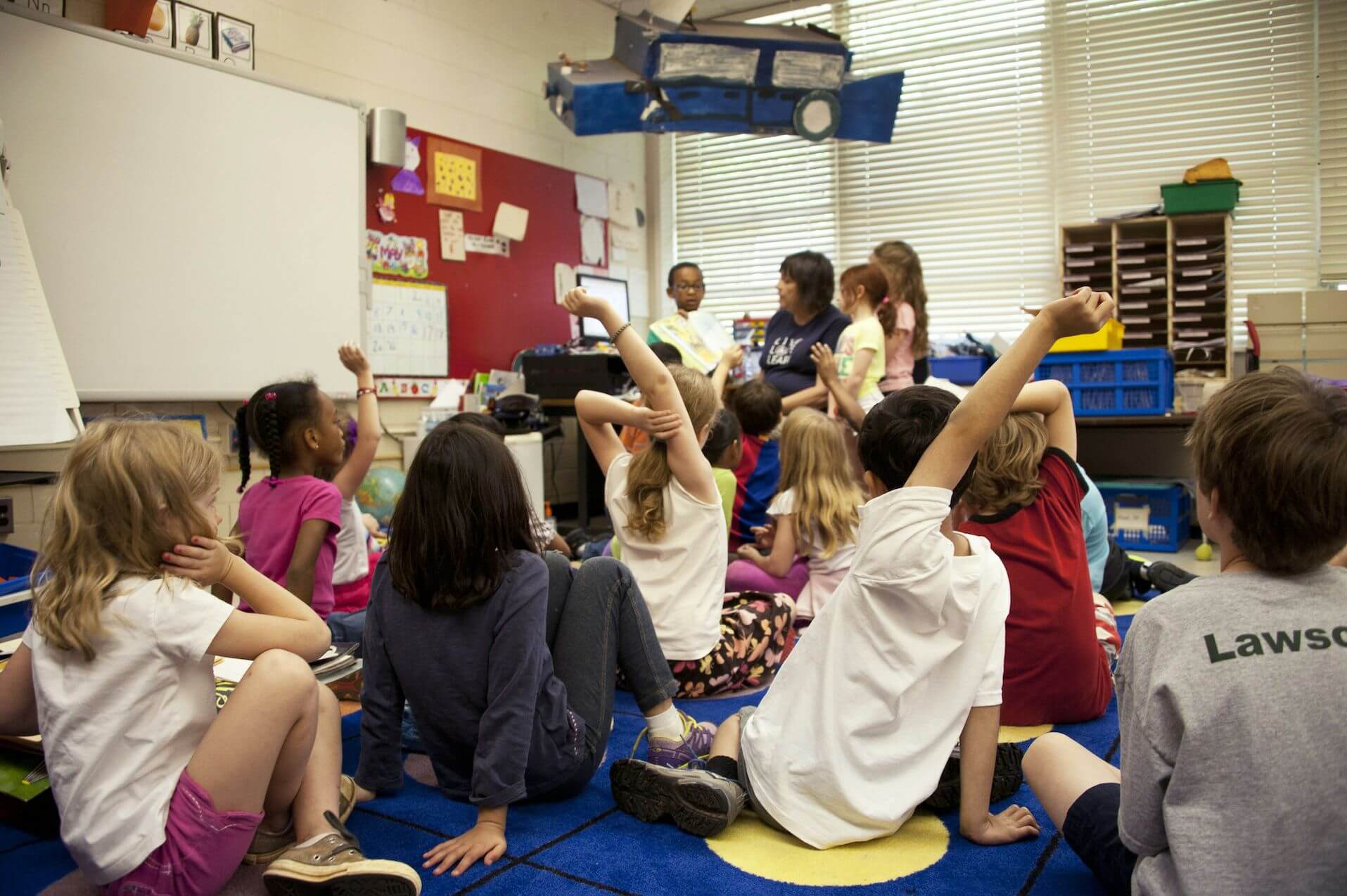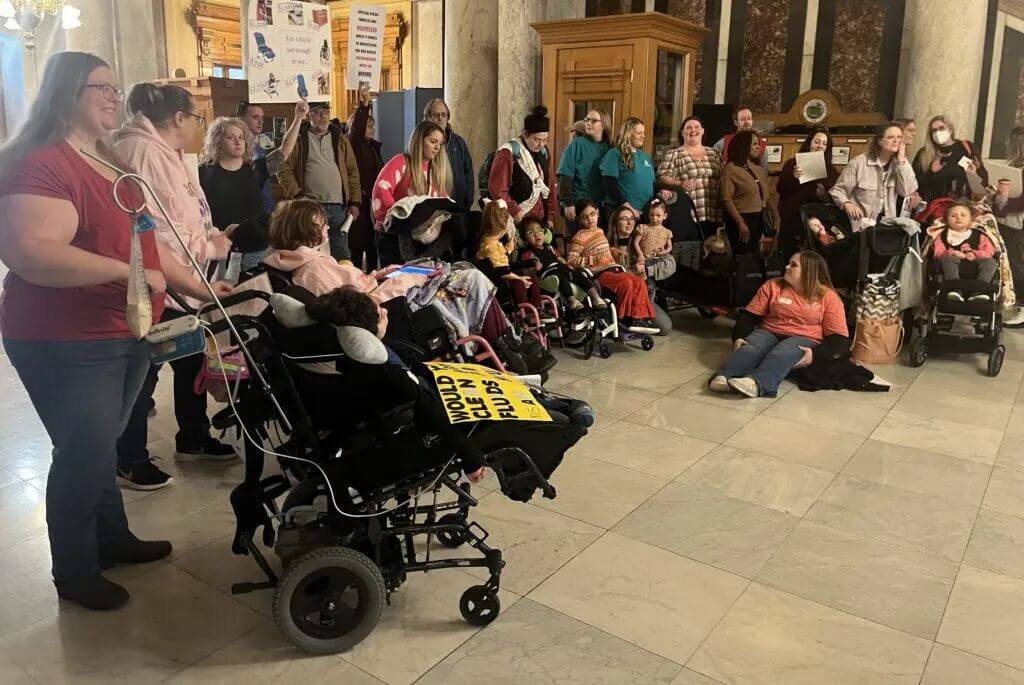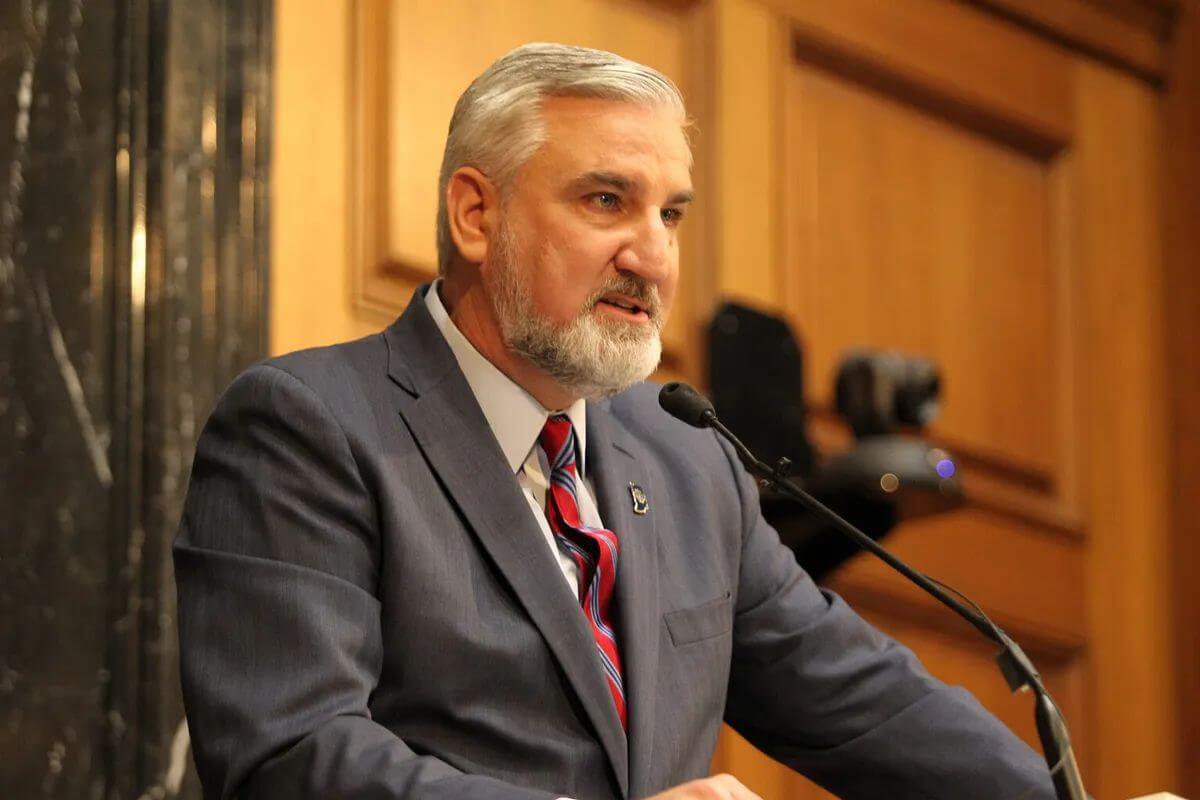2/5 Torchbearer Weekly Policy Update
Hope you had a great weekend. Thank you letting us be your trusted source for local, state, and federal policy updates.
- Indiana Adds Childhood Education, Child Care to State-Funded Workforce Training Programs
- ACA Enrollment Grows as Indiana Unwinds Medicaid Coverage
- Lt. Gov, Lawmakers Call on FSSA to Pause Medicaid Cuts for Parents of Disabled Children
- Why the U.S. Economy is Beating the World
- House Votes to Expand Child Tax Credit, Beef Up Corporate Tax Breaks
- Holcomb Postpones Remote Testimony Requirement
- Obamacare Signups Surge
- IU, Lilly Roll Out Co-Op Partnership to Address Indiana’s Workforce Shortage
- State Announces $6.9M Child Care Grant Round
- Housing Workshop Cohort Aims to Increase State’s Options
- Gov. Holcomb to Visit U.S. Southern Border
- Share the Torchbearer Newsletter with Your Network!
- Important Dates
Let’s dive in.
Indiana Adds Childhood Education, Child Care to State-Funded Workforce Training Programs

Indiana has added early childhood education and child care credential training options to its workforce training programs.
Why it matters: Child care is a key workforce issue, and quality child care starts with well-prepared professionals.
By the numbers: The training programs will be funded by the Workforce Ready Grant and Employer Training Grant.
The big picture: Indiana aims to improve the state's child care and preschool workforce through this initiative.
What's next: The addition of certified and committed staff throughout the state will enhance the talent pool. (WDRB)
ACA Enrollment Grows as Indiana Unwinds Medicaid Coverage

Hundreds of thousands of Hoosiers recently transferred into the Affordable Care Act (ACA) Health Insurance Marketplace, many of them first-time users of the program.
Why it matters: The increased ACA enrollment rates reflect people successfully moving into the marketplace and maintaining or continuing coverage.
By the numbers: Indiana's enrollment increased by 60% between 2023 and 2024, with nearly 300,000 Hoosiers securing health insurance coverage through the ACA Marketplace.
The big picture: Indiana's unwinding of Medicaid coverage and the review of enrolled Hoosiers to redetermine benefits have contributed to the surge in ACA enrollment.
Yes, but: Some enrollees have experienced confusion, paperwork errors, and issues with the transition from Medicaid to the ACA Marketplace.
What's next: Continued monitoring of paperwork errors, system glitches, and issues with notices, as well as efforts to resolve these issues and ensure a higher number of people maintain coverage. (IBJ)
Lt. Gov, Lawmakers Call on FSSA to Pause Medicaid Cuts for Parents of Disabled Children

Indiana Lt. Gov. Suzanne Crouch and lawmakers called on the Family and Social Services Administration (FSSA) to pause proposed program cuts for parents of medically complex children.
Why it matters: Parents are concerned about the impact of the cuts on their children's care and livelihoods.
By the numbers: There has been a significant increase in enrollment in attendant care programs, with expenditures growing from $20 million to $120 million.
The big picture: FSSA announced the cuts in response to a $1 billion Medicaid budget shortfall.
Yes, but: Parents argue that the proposed changes will leave them without options for caregiving.
What's next: Families are rallying against the proposed changes and urging FSSA to reconsider. (Indiana Capital Chronicle)
Why the U.S. Economy is Beating the World

The United States grew faster than other major advanced economies last year and looks poised to do so again in 2024. Here, we go a bit deeper on some of the potential factors for why.
Why it matters: The details shed light on some underlying strengths of the U.S. economy and reflect good policy choices and good luck.
State of play: Strong GDP growth in 2023 was driven by a combination of growth in both the labor force and productivity.
- But that's essentially a tautological statement — the open question is why the U.S. had both more people working and delivered more economic output for each hour worked.
- A significant part of the gain can be explained simply by there being more workers; the U.S. labor force expanded by 2.5 million people over the course of 2023, reflecting both immigration and native-born Americans joining the workforce.
The big picture: Adam Posen, president of the Peterson Institute for International Economics, argues that another important part of the story is a massive shift during the pandemic and its aftermath in which American workers shifted en masse toward higher-wage, higher-productivity work.
- In contrast, Europe and Japan remained tied to their pre-COVID jobs, as government policies incentivized keeping people on existing payrolls rather than offsetting lost income with unemployment benefits and cash payments.
Yes, but: This wasn't due to any grand design. "In a sense this was plain good luck, since the massive U.S. churn of people through unemployment and renegotiating job terms was the result of our politics and institutions, not of deliberate design," Posen tells Axios.
Between the lines: In a note out this morning, Skanda Amarnath of Employ America argues that strong 2023 U.S. productivity gains reflect federal investment in manufacturing capacity — a view also advanced by Biden administration officials.
- That also helps account for the superior growth results in the U.S. versus the rest of the G7.
- Amarnath also emphasizes the benefits of a full-employment economy, which may incentivize companies to be more creative and aggressive in finding new ways to make their workers more productive.
- He flags the possibility of "time to train" effects, meaning that the millions of workers employers added to their payrolls in 2021 and 2022 may not have hit high levels of productivity until 2023. (Axios)
House Votes to Expand Child Tax Credit, Beef Up Corporate Tax Breaks

The House on Wednesday overwhelmingly passed bipartisan legislation to cut taxes for working families and restore certain corporate tax breaks, but the bill faces long odds in the bitterly divided Senate, as lawmakers rush to send the measure to President Biden’s desk before the end of tax filing season in April.
Why it matters: The bill would expand eligibility for the child tax credit among the lowest-income families and adjust payments for inflation for the 2024 and 2025 filing years.
By the numbers: The bill passed the House by a vote of 357 to 70.
The big picture: The bill would also bolster certain business tax credits that were limited in an effort to cap the total costs of President Donald Trump’s 2017 tax cut law.
Yes, but: Sen. Chuck Grassley (R-Iowa) criticized the measure because it could help Biden’s reelection campaign.
What they're saying: Sen. Chuck Grassley (R-Iowa) said, “I think passing a tax bill that makes the president look good — may allow checks before the election — means that he can be reelected and then we won’t extend the 2017 tax cuts.”
What's next: The bill now moves to the Senate, where it faces opposition from Republicans who can block it with a filibuster. (Washington Post)
Holcomb Postpones Remote Testimony Requirement

Indiana Governor Eric Holcomb has issued an executive order postponing new technology requirements for public meetings or hearings on proposed executive branch rules.
Why it matters: The postponement is necessary due to technical challenges in meeting the new law, which requires webcasting and remote attendance and comments during hearings.
The big picture: The Indiana General Assembly mandated webcasting of hearings on the state website, but technical feasibility remains a challenge.
What's next: Implementation of the new technology requirements will be delayed until September 1. (Indiana Capital Chronicle)
Obamacare Signups Surge

A record 21.3 million people signed up for health insurance on the Affordable Care Act marketplaces for 2024, with the largest enrollment increases tallied in Indiana and other red states.
Why it matters: The 30.7% annual increase in ACA sign-ups comes as former President Trump's renewed calls for repeal have again raised doubts about the law's future, writes Axios' Jason Millman.
- Enrollment figures released by federal health officials last week indicate that Republican-leaning states would be heavily affected by the law's repeal.
By the numbers: States with the largest year-over-year increase in sign-ups include West Virginia (80.2%), Louisiana (75.9%), Ohio (62.2%), Indiana (59.6%) and Tennessee (59.5%), according to data from the Centers for Medicare and Medicaid Services, which oversees the marketplaces.
- Seven other states saw increases of 45% or more: Mississippi, Arkansas, Alabama, South Carolina, Georgia, Arizona and Texas.
- Almost a quarter of enrollees were new to the marketplaces this year.
Context: Some of the enrollment surge can likely be attributed to a portion of the millions who've recently lost Medicaid coverage moving to the marketplaces.
- Democrats also made marketplace subsidies larger and available to more people, though the enhanced assistance is set to expire after 2025 without an extension from Congress.
Zoom in: Nearly 300,000 Hoosiers signed up for plans through Healthcare.gov.
- Medicaid disenrollments in Indiana began in June, with enrollment declining 219,337 from May to December 2023.
- Roughly 30,000 were determined to be ineligible.
- About 190,000 were terminated for procedural reasons. (Axios)
IU, Lilly Roll Out Co-Op Partnership to Address Indiana’s Workforce Shortage

In a collaboration announced on Thursday, Indiana University (IU) and Eli Lilly and Co. are partnering to launch a co-op program aimed at strengthening the state's talent pipeline.
Why it matters: The partnership between IU and Eli Lilly will provide undergraduate students with valuable industry experience and enhance career opportunities.
The big picture: Indiana is facing a severe workforce shortage, and this collaboration aims to address that by connecting students with opportunities at Lilly.
What's next: Enrollment for the program will begin later this year, and it will initially be available to students in IU's Kelley School of Business Indianapolis, the Luddy School of Informatics, Computing and Engineering, and the School of Health & Human Sciences in Indianapolis. (Inside Indiana Business)
State Announces $6.9M Child Care Grant Round

The state is dedicating $6.9 million to employer-sponsored child care grants for an additional 22 businesses, community groups, and school corporations.
Why it matters: The investment in child care grants is important because it provides more opportunities for workforce participation and improves the quality of life for Indiana families.
By the numbers: Over 40 employers will offer on-site child care, while 15 will provide child care tuition benefits. Small employers will receive up to $50,000, mid-sized employers will receive $350,000, and large employers will receive up to $750,000.
The big picture: The renewed investment brings the total amount directed to expanding child care offerings throughout the state to $25 million.
What's next: The state will continue to partner with businesses to provide more child care options and support for their workforce, leading to a sustainable future for Indiana families. (Inside Indiana Business)
Housing Workshop Cohort Aims to Increase State’s Options

In its 16th year of collaboration, the Indiana Housing and Community Development Authority and Corporation for Supportive Housing have announced the four regional teams that will participate in a workshop aimed at increasing affordable and supportive housing projects throughout the state.
Why it matters: The program seeks to connect housing developers, service providers, property managers, and community-based organizations to address housing lacking in their areas.
The big picture: The Indiana Supportive Housing Institute is an opportunity for IHCDA to promote housing stability for those experiencing homelessness and align affordable housing developments to the current needs in communities.
What's next: Organizations can now apply for IHCDA funding. (Inside Indiana Business)
Gov. Holcomb to Visit U.S. Southern Border

Indiana Gov. Holcomb headed to the U.S. southern border this past weekend.
Why it matters: It is important because Holcomb joined Texas Gov. Greg Abbott and 13 other governors for a news conference to get a briefing on Texas' effort to secure the border.
The big picture: Texas has installed razor wire along parts of the U.S. border with Mexico, and while the U.S. Supreme Court has ruled federal officers could remove it, Texas is refusing to allow border patrol access to the area.
What's next: After visiting Canada last week, Holcomb is now focusing on the U.S. southern border. (WISHTV)
Share the Torchbearer Newsletter with Your Network!

Not signed up for our weekly newsletter? Sign up today!
Important Dates:

Monday, February 5th - House 3rd Reading Deadline
Monday, February 5th - Senate 2nd Reading Deadline
Tuesday, February 6th - Senate 3rd Reading Deadline
Tuesday, February 27th - House Committee Report Deadline
Thursday, February 29th - House 2nd Reading Deadline
Thursday, February 29th - Senate Committee Report Deadline
Monday, March 4th - House 3rd Reading Deadline
Monday, March 4th - Senate 2nd Reading Deadline
Tuesday, March 5th - Senate 3rd Reading Deadline
Thursday, March 14 - Last Day to Adjourn Sine Die
